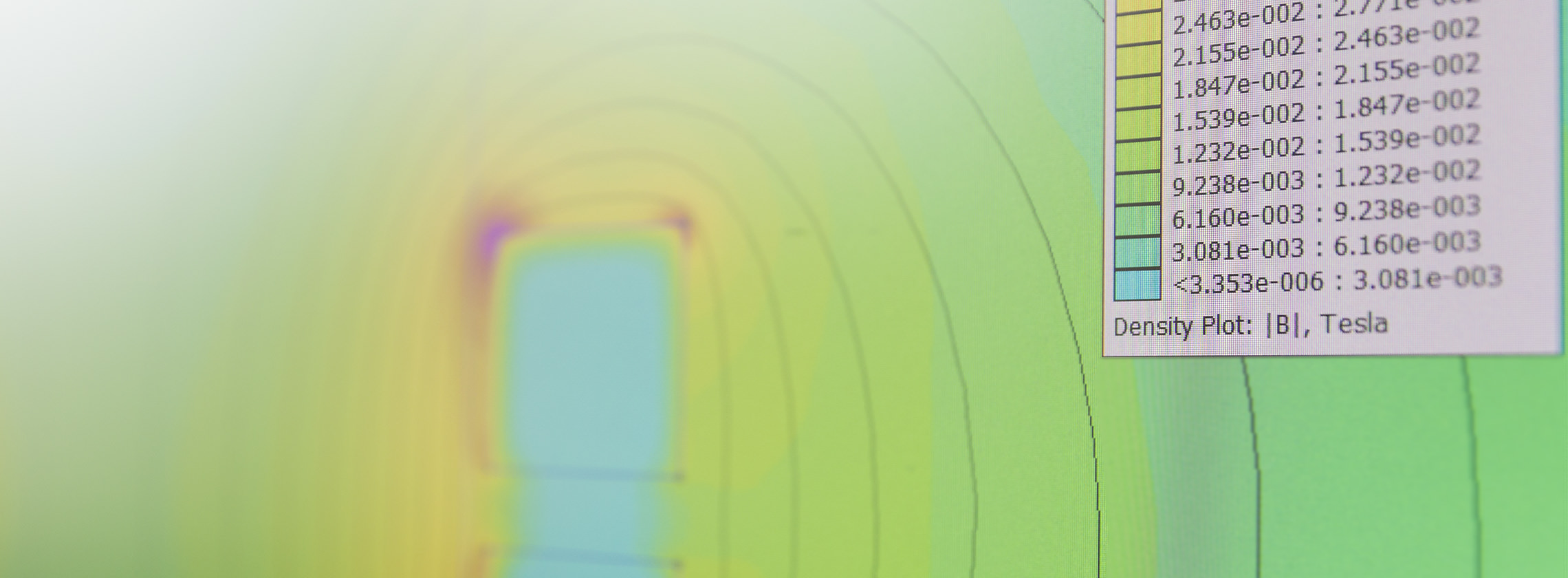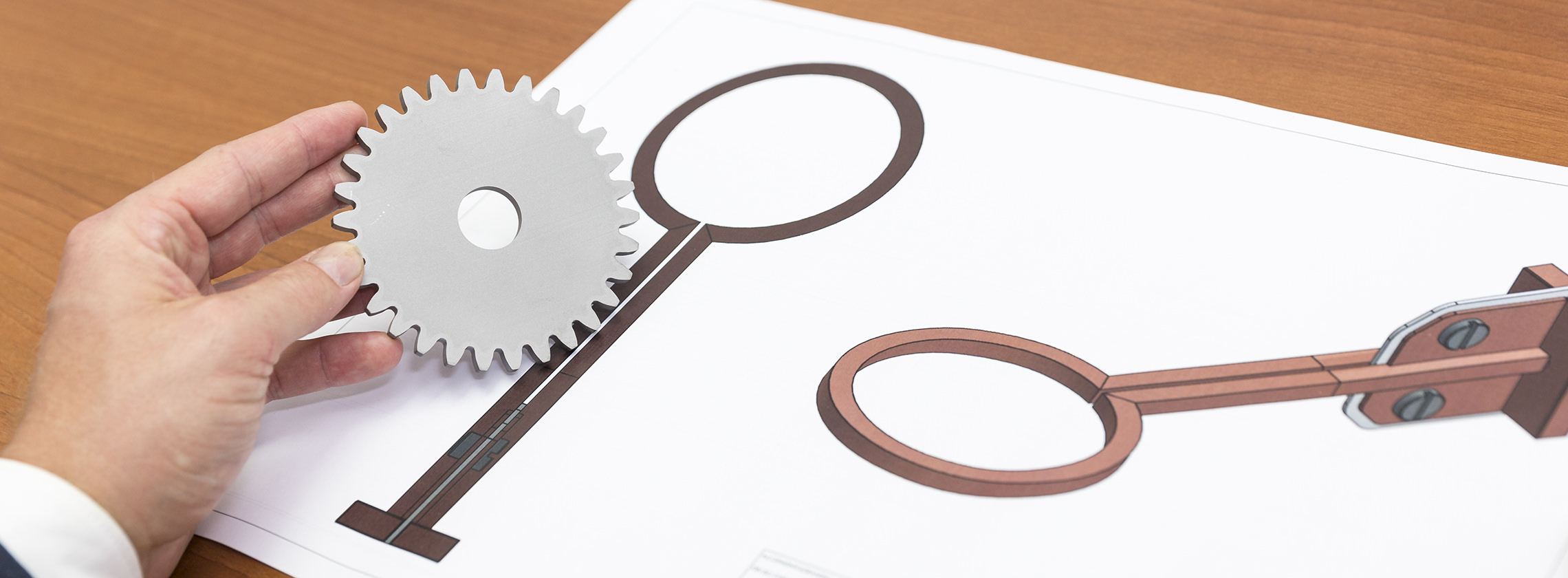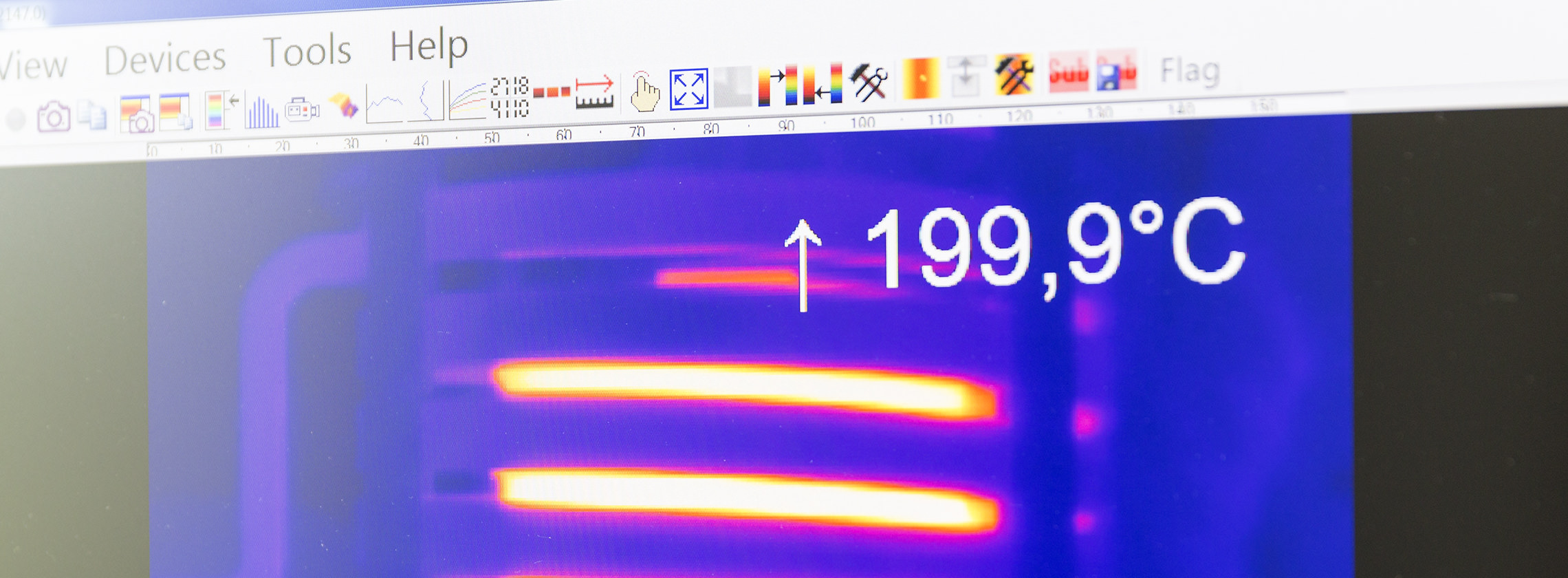Induction heating
In inductive heating, an electrically conductive body is heated by means of an alternating electromagnetic field. An induction heating system consisting of generator and coil is required to generate the electromagnetic field. The generator generates a medium or high frequency alternating current. This generates an electromagnetic alternating field around the coil (inductor). If there is an electrically conductive body in this field, eddy currents are induced. The electrical resistance of the workpiece generates heat. Additional remagnetization losses occur with ferromagnetic bodies.
Applications of the inductive heating
Typical applications are hardening, soldering, shrinking, tempering, annealing, welding, forging and melting. Processing times can range from a few milliseconds to several hours. An interdisciplinary understanding is necessary for the optimal design of an application. Knowledge of electromagnetic fields, material science, power electronics and thermodynamics is required in order to operate the heating process in the best way.
Advantages of induction heating
Induction heating enables heat sources directly in the electrically conductive body. Unlike heat transfer by conduction or radiation over the workpiece surface, the heat does not have to be introduced. The efficiency is very high and due to the very high power densities very short heating times are possible. In combination with excellent controllability, a high degree of heating quality and process reliability can be guaranteed.
Skin effect
The skin effect is the displacement of the current to the conductor surface at higher frequencies.
Penetration depth
The penetration depth is the layer thickness at which the induced current density has dropped to 36.8%. This layer accounts for 86% of the power dissipation. The penetration depth depends on the frequency, permeability and electrical resistance.
Curie point
The Curie point is a temperature value. The permeability of ferromagnetic materials assumes the value 1 at this temperature. Above the Curie point, the magnetic properties are lost. The Curie point for steel is approx. 770°C.




